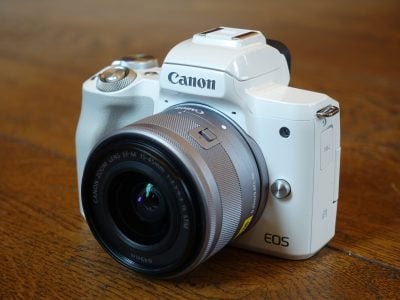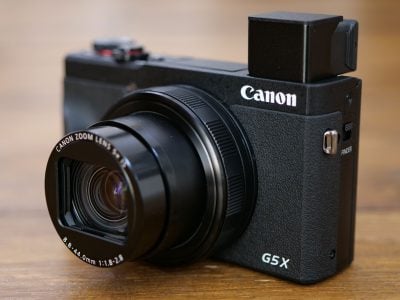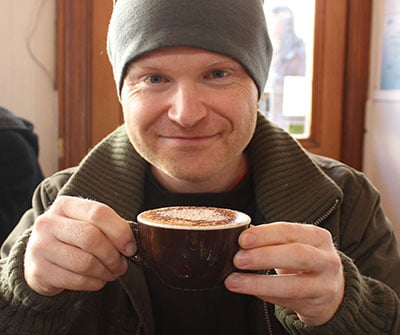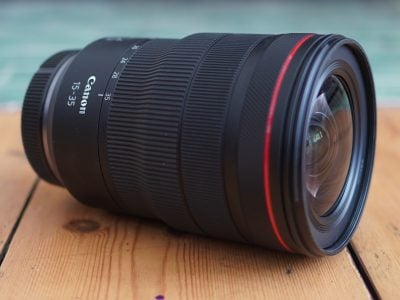Canon RF 15-35mm f2.8L IS USM review
-
-
Written by Gordon Laing
Intro
The Canon RF 15-35mm f2.8L IS USM is a bright ultra-wide-angle zoom for the full-frame EOS R system. Teased in February 2019 and launched the following August alongside the RF 24-70mm f2.8L IS USM, they represent two thirds of the so-called Trinity of professional zoom lenses, with the RF 70-200mm f2.8L IS USM completing the set a few months later. Many photographers consider these three lenses (or similar) as essential purchases, and as such they’re critical members of any camera system.
Rather than simply recreating a native version of the existing EF 16-35mm f2.8L III USM for the EOS R system though, Canon’s sensibly opted to exploit the benefits of mirrorless technology and modern optics to produce something different. Both lenses may be similar in size and weight, but by widening the short-end to 15mm, the RF 15-35mm becomes Canon’s widest zoom with an f2.8 focal ratio and in a key advantage over the EF version, it also now includes optical image stabilisation. Previously in the EF mount, you’d need to go for an f4 version to enjoy stabilisation from Canon. The newer RF version also employs Nano USM motors for quieter and smooth focusing in movies and while the closest focusing distance is the same 28cm, Canon claims a slightly greater magnification presumably due to differences in focus breathing.
In my review I’ll show you what the RF 15-35mm f2.8L IS USM is capable of, while also directly comparing the features and quality against the existing EF 16-35mm f2.8L III USM. Like most RF lenses, the 15-35mm carries a price-premium over the older EF model, but in this case you’re only looking at spending around 10-15% extra, so in my review I’ll see if it’s worth going for the new model or adapting the EF version.
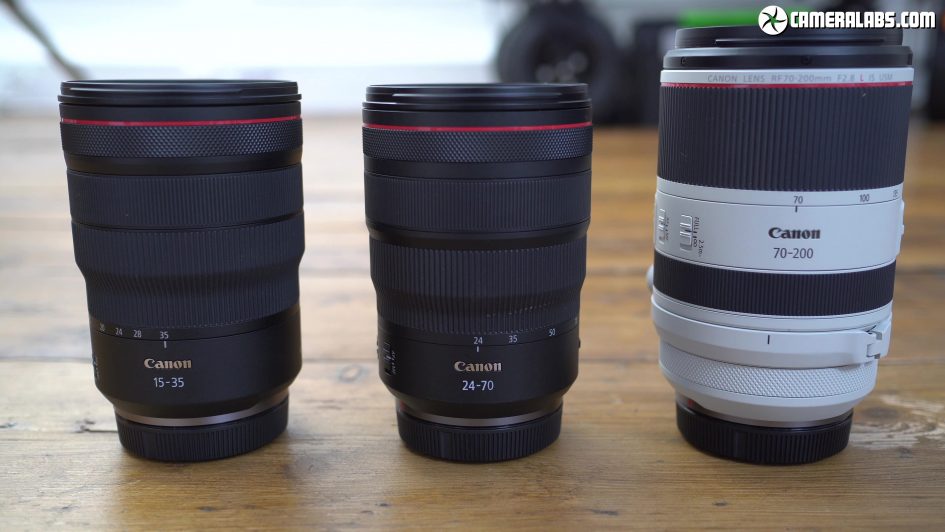
Above: Launched alongside the RF 24-70mm f2.8L IS USM, they represent two thirds of the so-called Trinity of professional zoom lenses, with the RF 70-200mm f2.8L IS USM completing the set a few months later. Many photographers consider these three lenses (or similar) as essential purchases, and as such they’re critical members of any camera system. If you’re interested in the 70-200mm, check out my in-depth review of it.
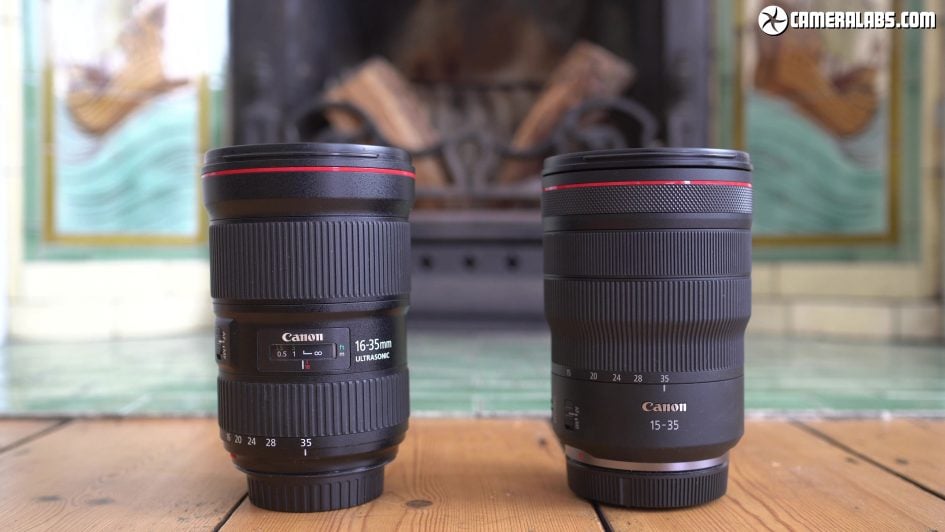
Above: Here’s the EF model on the left and the newer RF version on the right. Both lenses share virtually the same dimensions: 89mm in diameter and 127mm long, although at 840g, the newer RF version is 50g heavier – nothing you’ll notice in your hands though.
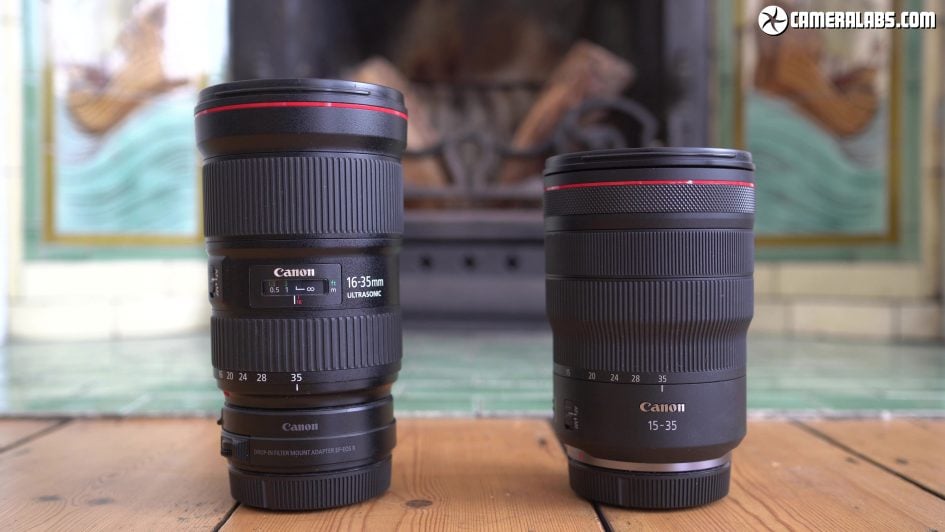
Above: If you’re adapting the older EF version on the left, the weight of the adapter makes it slightly heavier than the native version and about an inch longer – again the weight difference was negligible in use, although I did notice the EF lens and adapter occupying more space in my smaller bags.
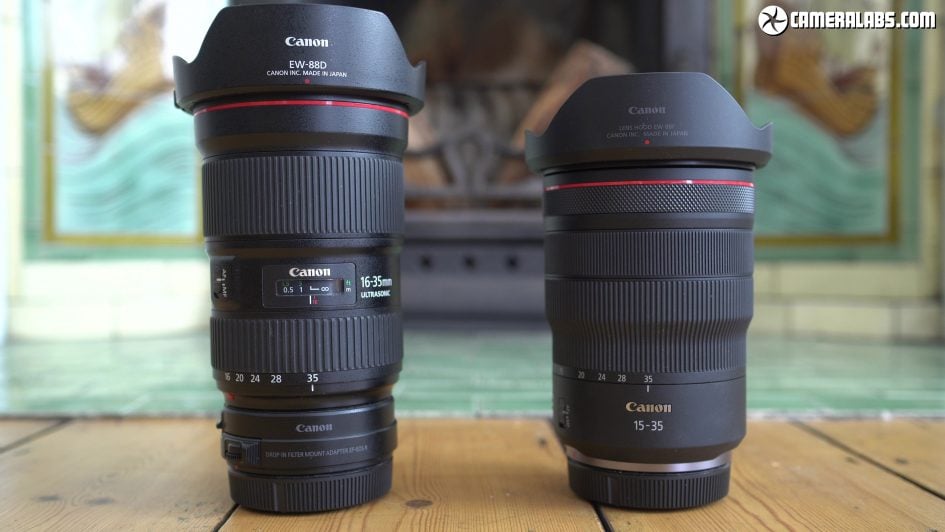
Above: And here they are fitted with their supplied and similarly-designed petal lens hoods. Not much to say here other than to add both lenses also share the same 82mm filter thread.
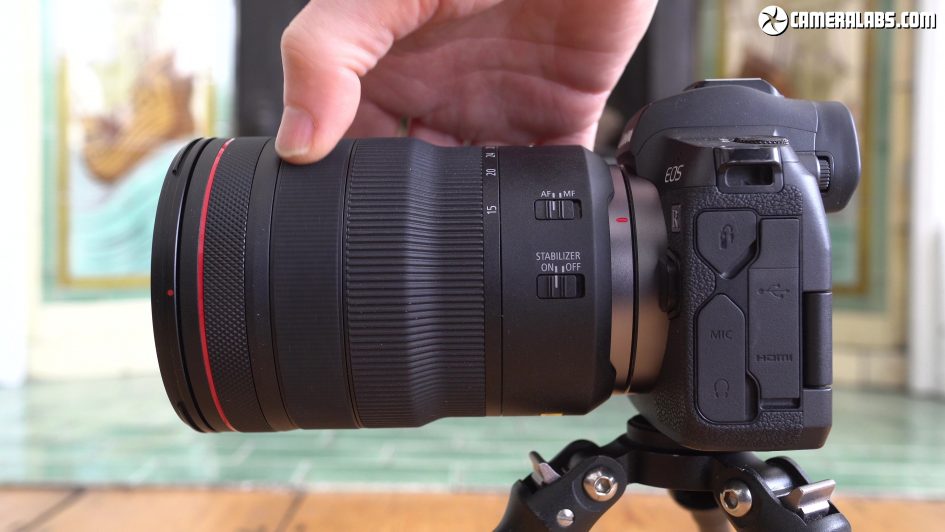
Above: There’s three rings around the RF lens barrel, starting with the zoom control closest to the lens mount. As you zoom wider from 35 to 15mm, the barrel extends a little. Next is the manual focusing ring which, like most mirrorless cameras, employs a motorised focus-by-wire system, rather than a mechanical coupling with the actual optics. There’s pros and cons to both systems, but the manual focus ring here certainly spins very smoothly with a nice degree of resistance. And finally as a native RF lens, the 15-35mm also features a customisable clicky control ring, this time positioned at the end of the barrel.
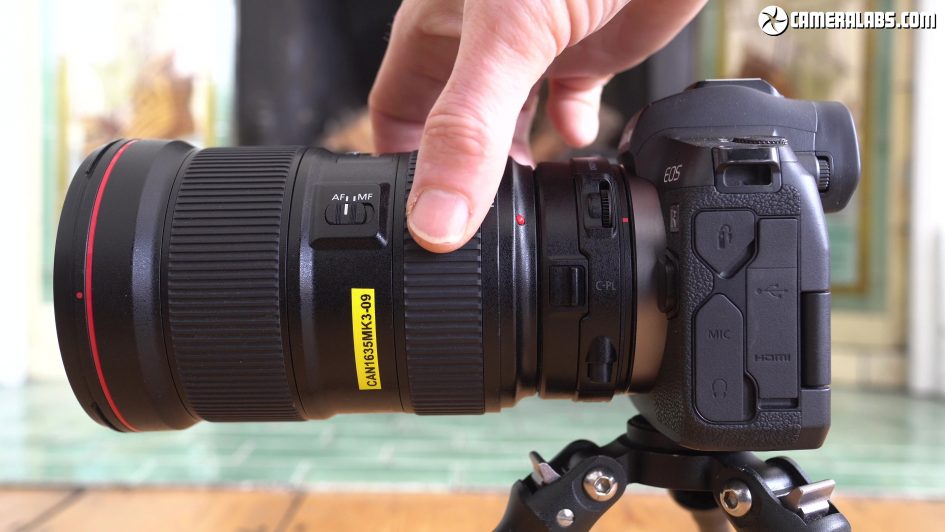
Above: And now for comparison here’s the Mark III EF 16-35mm f2.8L adapted to the EOS R using the optional filter adapter – notice how much longer it looks with the adapter. Like the RF version, the zoom ring is positioned closest to the mount, although this time the actual zooming takes place internally with no extending sections – only time will tell if the RF model is more vulnerable to dust entering the barrel, although Canon seems acutely aware of the challenges and expectations. The second ring on the EF 16-35mm adjusts the focus with a mechanical coupling to the actual focusing group, which in turn allows a small window atop the barrel to indicate the focus distance; note native RF lenses support a digital distance scale on the screen instead.
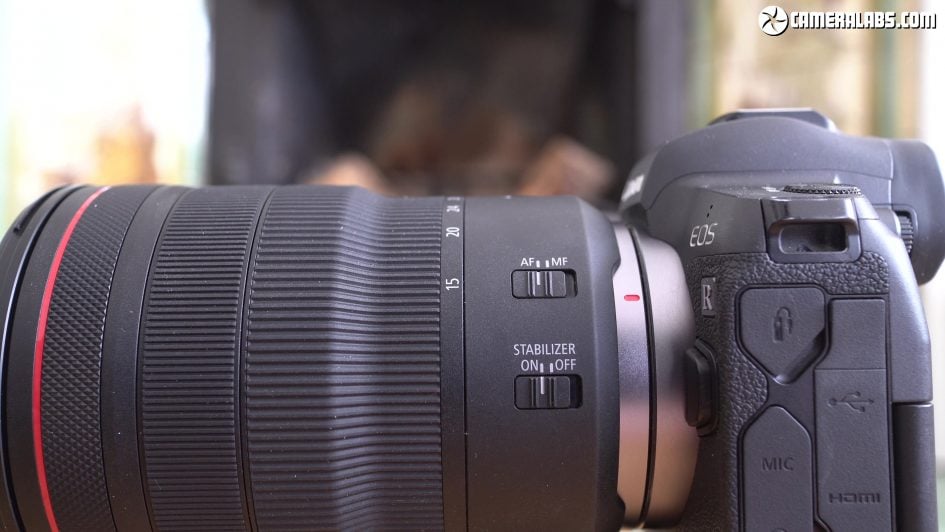
Above: The RF 15-35mm f2.8L features two control switches on the barrel: one, like the EF version to toggle between manual and autofocus, while the second switches the optical stabilisation on and off. This is a major feature of the RF 15-35mm and one that sets it apart from the EF 16-35mm f2.8L, so let’s see how it performs in practice.
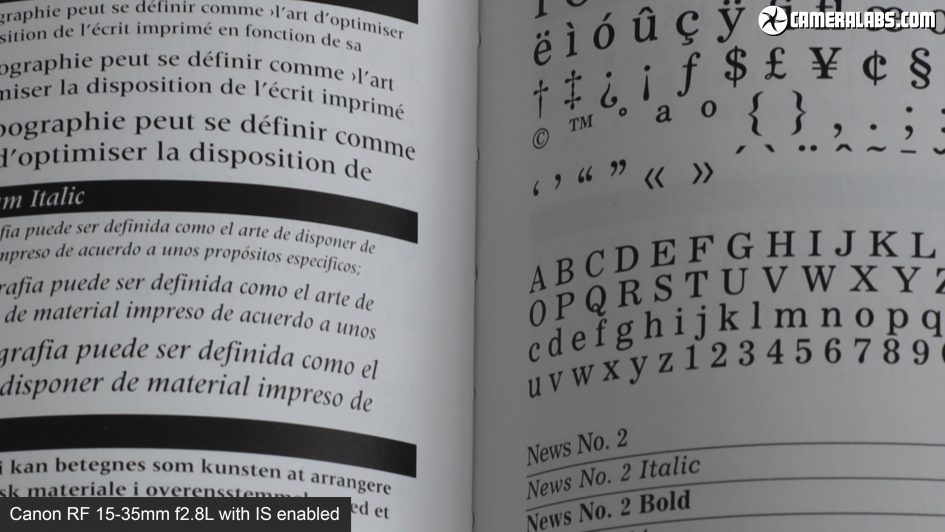
Above: Here’s a photo I took with the RF 15-35mm at 35mm from close range. On the day without stabilisation, the slowest shutter speed I could handhold without shake was at around 1/40. With optical stabilisation enabled, I could handhold the same result between 1/10 and 1/5, representing about two and a half stops of compensation. While this result wasn’t as significant as some other systems I’ve tested, it’s still valuable for hand-holding slower shutters. Stabilisation is also invaluable for video as you can see in my full video review at the top of the page.
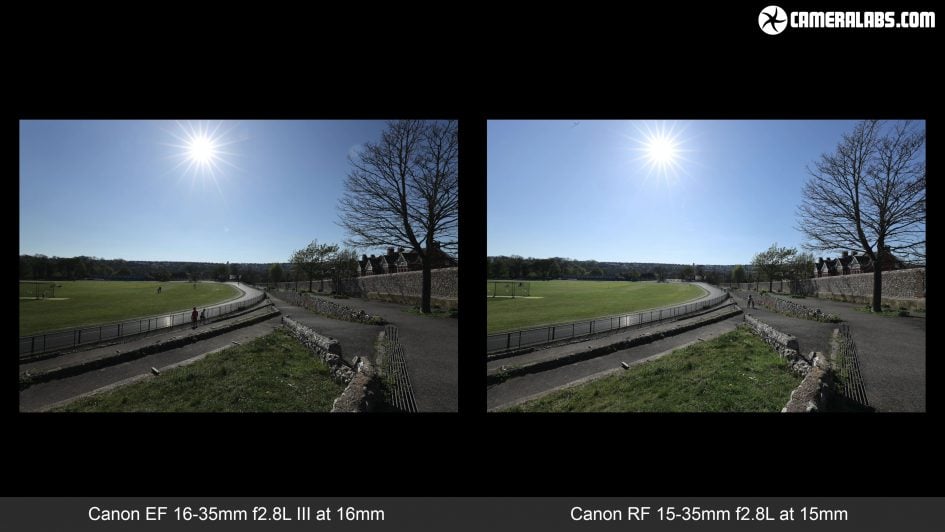
Above: Now onto coverage where in theory the RF 15-35mm should start a tad wider, offering a slightly broader overall range, but as always it’s important to test it in practice. Here’s the older EF 16-35mm at 16mm on the left and the newer RF 15-35mm at 15mm on the right, and you can clearly see how the RF model can capture a slightly wider field of view as you’d expect.
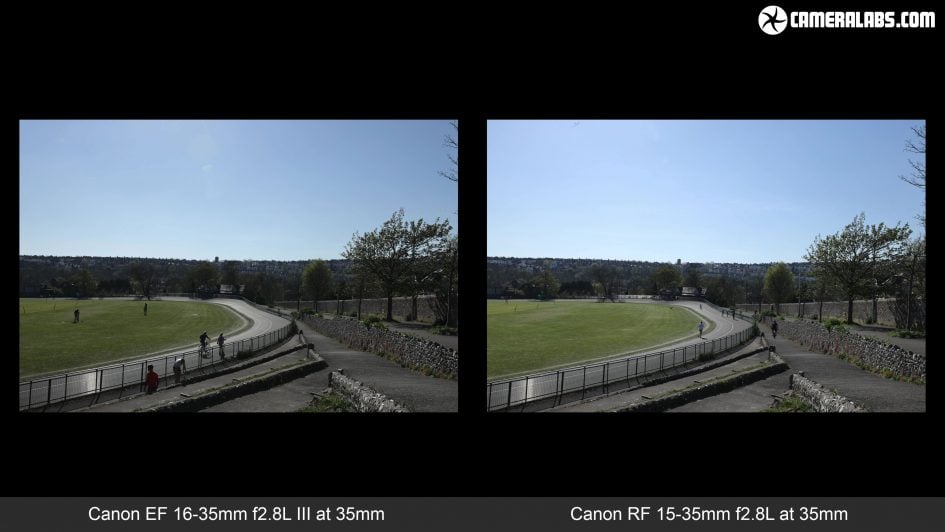
Above: At the other end of the range, here’s the older EF 16-35mm at 35mm on the left, and the newer RF 15-35mm at 35mm n the right and while the composition has shifted a little to the side, the actual magnification and coverage is virtually identical. So when focused on a distant subject, the RF 15-35mm can deliver slightly wider coverage at the short end while matching the EF model at the long-end.
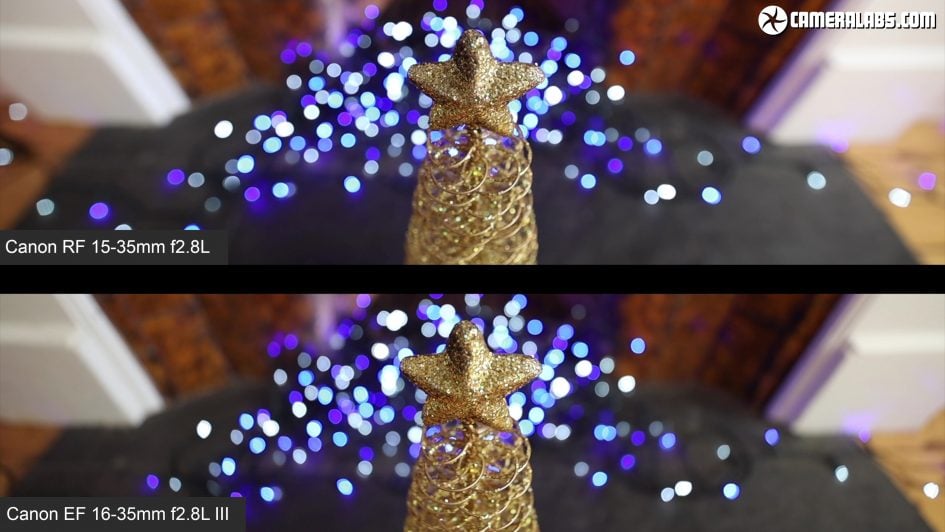
Above: Here’s the EF 16-35mm near to its minimum focusing distance at 16mm, and the RF 15-35mm from the same distance at 15mm, where you can see it’s still capturing a slightly wider field of view as you’d expect.
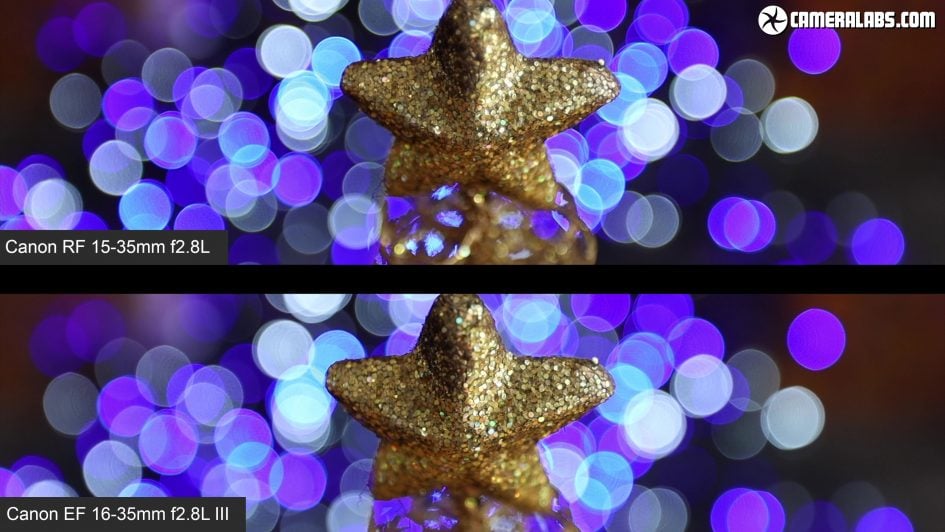
Above: At the other end of the range, here’s the EF 16-35mm at 35mm from the same distance as before, and the EF 15-35mm at 35mm, again from the same distance as measured from the body’s sensor plane. There’s some rotation in the image, but the magnification of the star in the middle is very similar when overlaid, confirming the RF 15-35mm is delivering a slightly broader range when focused close. If you measure the star’s width on the wide and long versions though, you will discover both lenses reduce their overall ranges to just over 2x when focused at very close distances, compared to their 2.2 or 2.3x ranges when focused at infinity. This is due to focus breathing and fairly normal in most zooms though, and crucially one isn’t worse than the other in this regard.

Above: To compare their macro performance, here’s a ruler photographed with each lens as close as I could focus them – the RF is at the top and the EF is at the bottom, both shooting at 35mm here and the images are uncropped widthways. Interestingly while Canon quotes both as sharing the same 28cm minimum focusing distance, the maximum magnification for the EF is quoted as 0.25x versus 0.21x for the RF – and that’s confirmed here. Due to their respective optical designs, the older EF model will deliver a slightly bigger subject size than the RF at their closest focusing distances, but the difference here is more of academic interest than an actual practical benefit. I’d also say both lenses are similar in terms of sharpness and detail at close range.
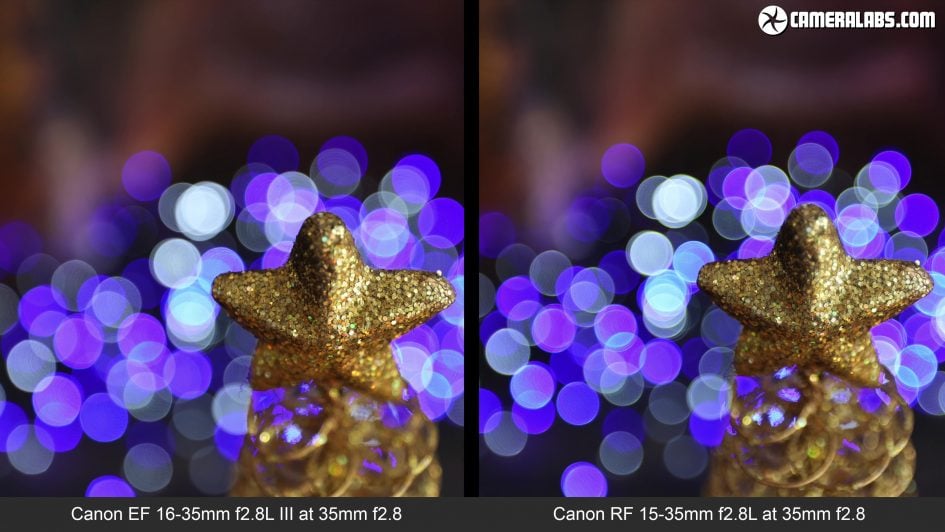
Above: Now back to the bokeh blobs, starting with the RF 15-35mm at 35mm f2.8 from close range where there’s a little onion-ringing and outlining, but nothing to spoil the effect. Closing the aperture down gradually reveals the nine-blade shape of the aperture system, but still delivers attractive rendering and results. How about the EF 16-35mm in comparison? Here it is on the left, with the RF 15-35mm on the right, both at 35mm f2.8, and I’d say there’s little to tell them apart in rendering style.
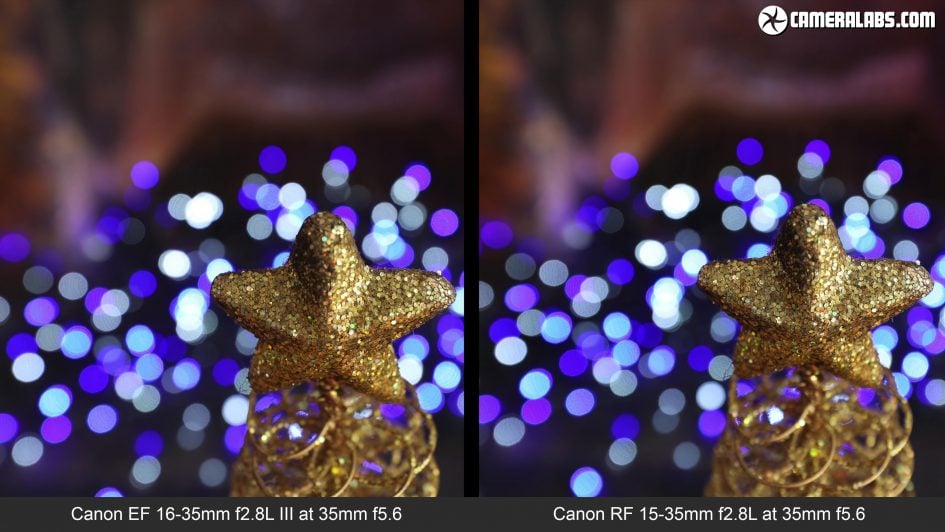
Above: Likewise as you close-down the aperture on each lens, both of which share nine-blade systems – there’s not a lot to tell them apart here and as you saw earlier in my vlog tests, both can look great when filming pieces to camera.
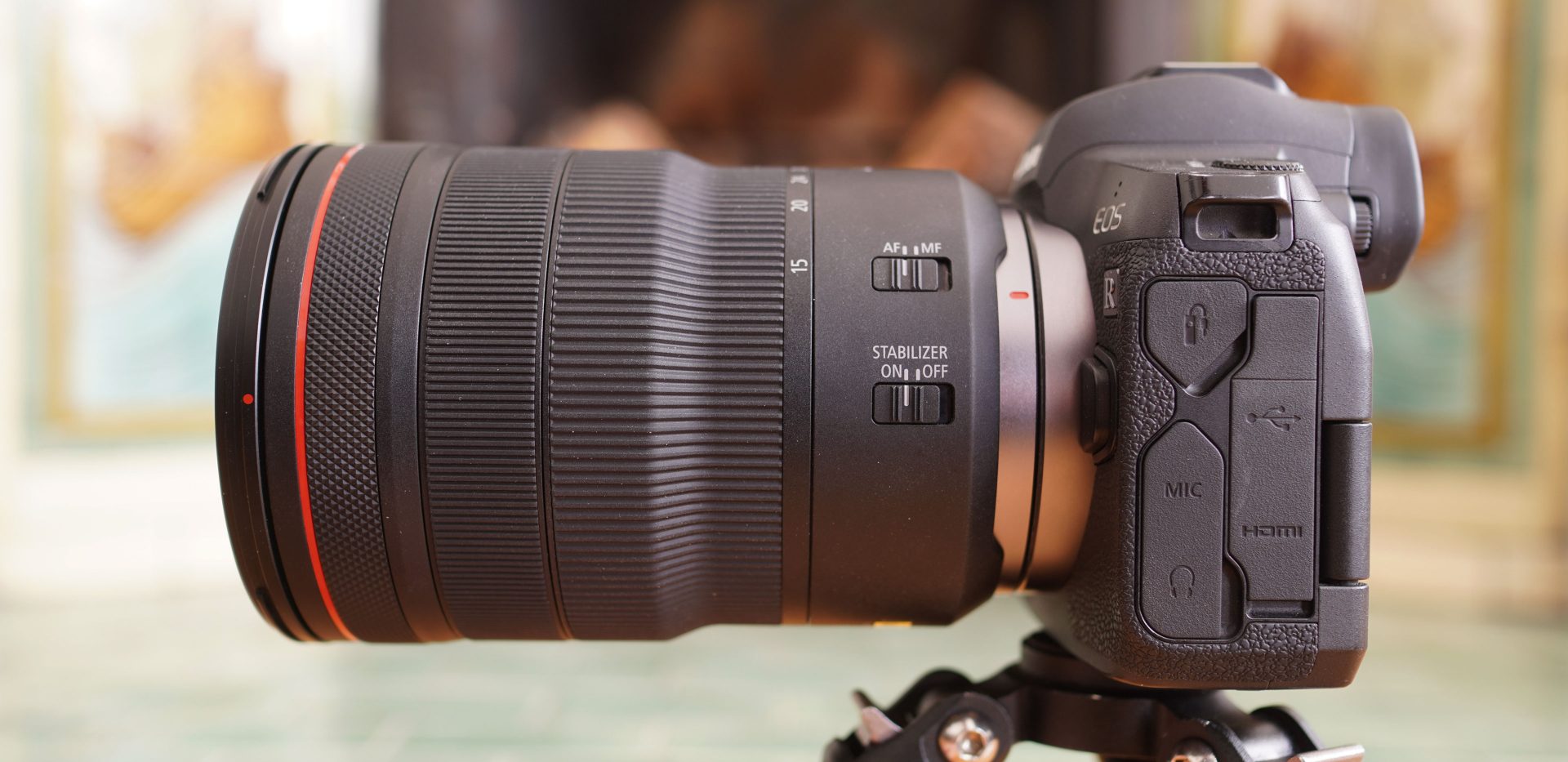
 The Canon RF 15-35mm f2.8L is the first ultra-wide lens in the native EOS R mount and a key model for the system. Like other high-end RF lenses, it performs very well whether you’re shooting near or far, taking photos or filming video. Unsurprisingly its biggest rival is Canon’s excellent 16-35mm f2.8L Mark III. The new RF version is almost identical in size, similar in weight and in the majority of my tests also delivered very close results. It does however benefit from zooming a little wider at the short-end while also now including optical stabilisation which, while modest in my tests, still allowed me to handhold shutter speeds slower than without. It’s also beneficial for video, although Canon’s digital movie stabilisation also does a good job with non-IS lenses like the EF 16-35mm. With some models, there’s a substantial price difference between the EF and RF versions, but here you’re only looking at about a 10% premium for the RF. If you already own the Mark III EF version, I’d say stick with it, but if you don’t yet own an ultra-wide f2.8 zoom for an EOS R body, then it’s worth spending the small amount extra on the RF for its wider coverage, optical stabilisation, customisable control ring, and smoother, quieter focusing. As such it comes Highly Recommended for EOS R owners.
The Canon RF 15-35mm f2.8L is the first ultra-wide lens in the native EOS R mount and a key model for the system. Like other high-end RF lenses, it performs very well whether you’re shooting near or far, taking photos or filming video. Unsurprisingly its biggest rival is Canon’s excellent 16-35mm f2.8L Mark III. The new RF version is almost identical in size, similar in weight and in the majority of my tests also delivered very close results. It does however benefit from zooming a little wider at the short-end while also now including optical stabilisation which, while modest in my tests, still allowed me to handhold shutter speeds slower than without. It’s also beneficial for video, although Canon’s digital movie stabilisation also does a good job with non-IS lenses like the EF 16-35mm. With some models, there’s a substantial price difference between the EF and RF versions, but here you’re only looking at about a 10% premium for the RF. If you already own the Mark III EF version, I’d say stick with it, but if you don’t yet own an ultra-wide f2.8 zoom for an EOS R body, then it’s worth spending the small amount extra on the RF for its wider coverage, optical stabilisation, customisable control ring, and smoother, quieter focusing. As such it comes Highly Recommended for EOS R owners.